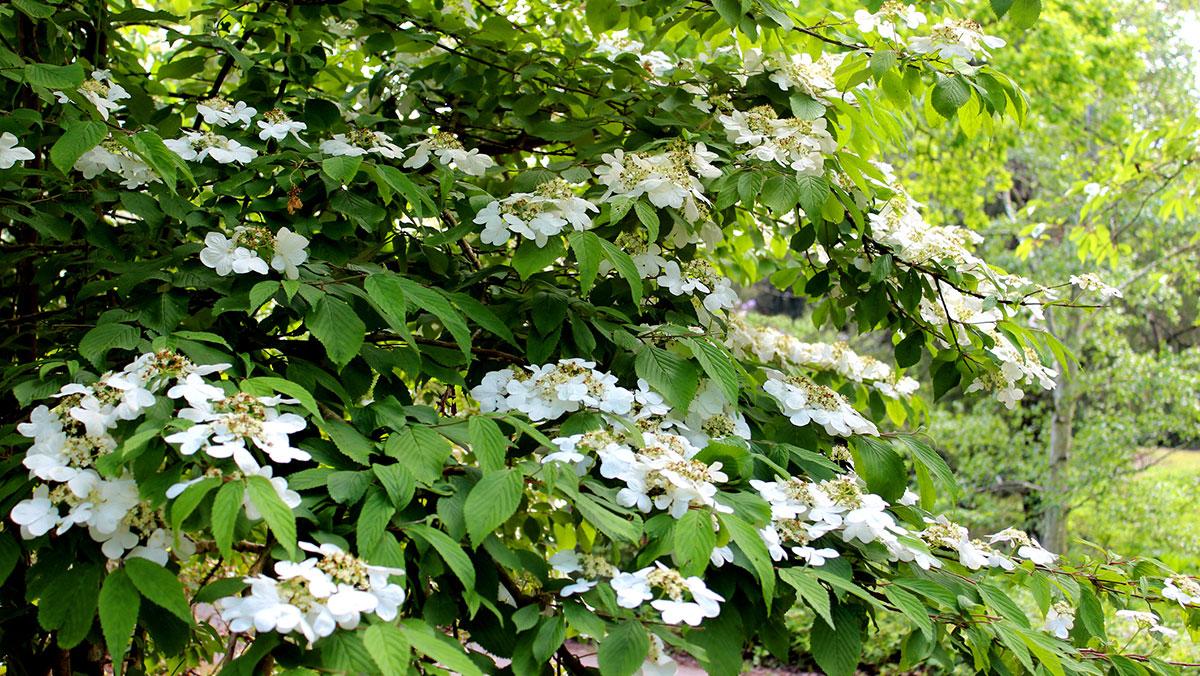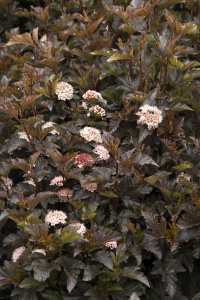Flowering shrubs play an important role in creating a habitat that pollinators love and to which they flock. Shrubs are vital to a pollinator friendly garden. Incorporate different canopy layers in the landscape and plant shrubs with various seasons of bloom. Then, you will attract different pollinator species and provide pollen and nectar throughout the seasons. It can be as simple as planting a small grouping in your landscape. These are just a few of the many choices for shrubs that draw pollinators. Consult with your local garden center for even more options.
Many shrubs span a wide variety of zones. You might want to read our suggestions for other regions to increase your choices: Southeast, South, Midwest, Northwest, Southwest
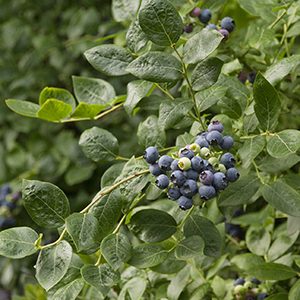
Northland Midseason Blueberry
Late spring pink-tinged white flowers are an important food source; mature fruits later feed birds. Best fruit set with second variety nearby. Zone: 3 – 7
Attracts: Mining bees, mason bees, long-tongued bees.
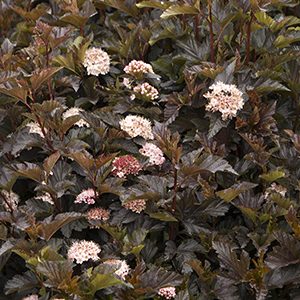
Petite Plum® Ninebark
Showy flowers bloom in dense clusters in spring luring bees and butterflies followed by attractive seed pods adored by birds. Zone: 3 – 8
Attracts: Native bees, butterflies.
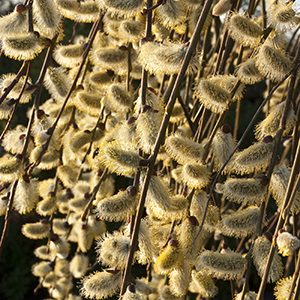
Kilmarnock Willow
Bees are waking up, shaking off winter and they are plenty hungry. Catkins provide early bloomers with a ready supply of pollen. Zone: 4 – 8
Attracts: Bees (mining and others), wasps, and butterflies.
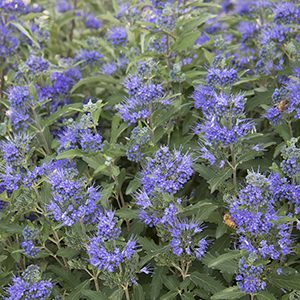
Blue Balloon Bluebeard
Bees think the striking deep blue flowers are candy grown just for them! Important late season food source for migrating pollinators. Zone: 5 – 9
Attracts: Honey bees, native bees, hoverflies.
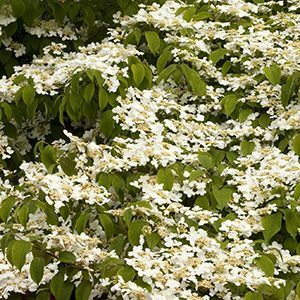
Doublefile Viburnum
Tiered horizontal branches covered with magnificent, large, white, lacecap spring flowers and ornamental reds fall fruits adored by songbirds. Zone: 5 – 9
Attracts: Bees, butterflies, moths.
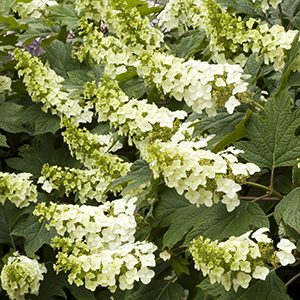
Snow Queen Oakleaf Hydrangea
Large, long clusters of white flowers that become rose-pink in fall attract pollinators in droves. Partly with food and partly with places to nest. Zone: 5 – 9
Attracts: Honeybees, bumblebees, and hoverflies.
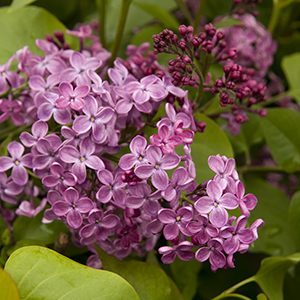
Pocahontas Canadian Lilac
Extremely hardy, early blooming variety. Fragrant blooms in early May, 7 to 10 days before common lilac varieties flower. Zone: 2 – 7
Attracts: Honeybees and Leafcutter bees.
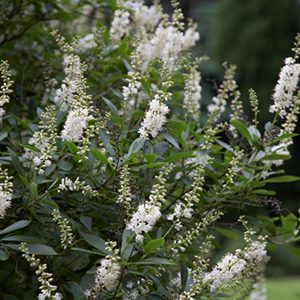
Summersweet
N. American native blooms with profuse, fragrant, white flower spikes on current season growth. Grows well in wet areas. Zone: 4 – 9
Attracts: Butterflies, honey bees, wasps, hummingbirds.
TIPS FOR LURING POLLINATORS
-
Determine which pollinator-friendly plants are appropriate for your region.
-
Limit your use of chemicals (both synthetic and organic) and use plenty of compost and mulch to build healthy soil. Healthy soils create healthy plants.
-
Plan your garden so that there is something blooming for as many months as you can manage. (Try incorporating different color, fragrance, and season of bloom). Many pollinators, especially bees, forage during the entire growing season.
-
Provide shelter by letting your yard get a little wild. Allow a hedge to grow untrimmed, leave a section of lawn unmowed and pile grass cutting in a sunny spot. Then, create a nesting habitat by leaving some soil bare for ground nesting bees.
-
Group plantings so that pollinators can move safely through the landscape protected from predators.
-
A clean, reliable source of water is essential to pollinators.
-
Plant a diversity of plants to support a variety of pollinators.
